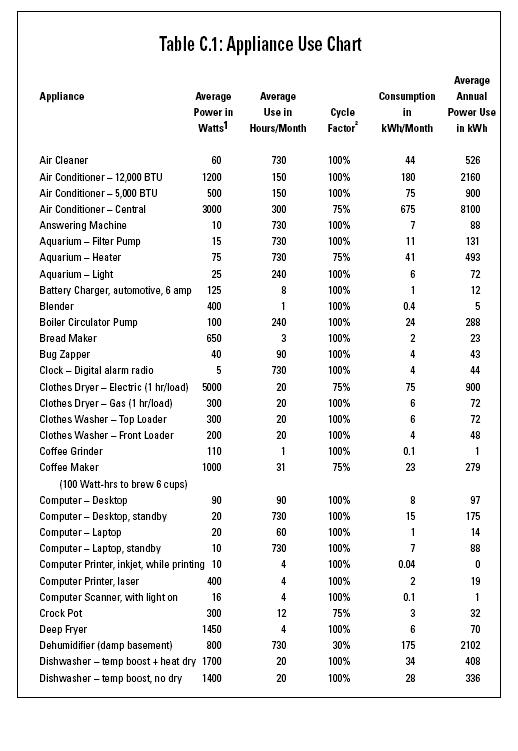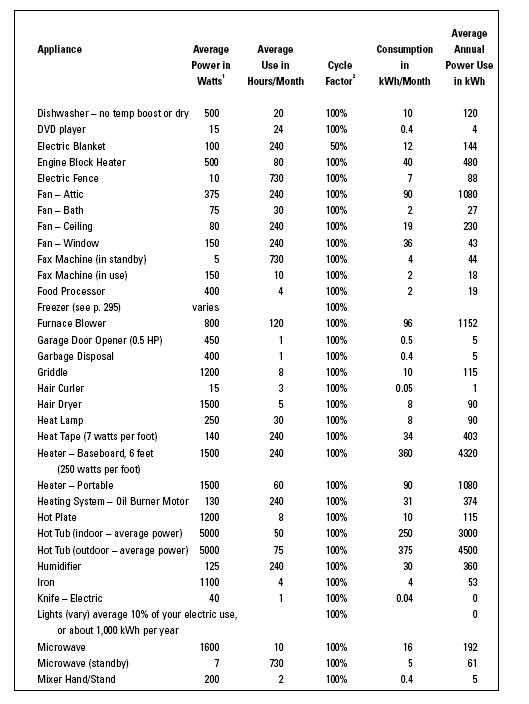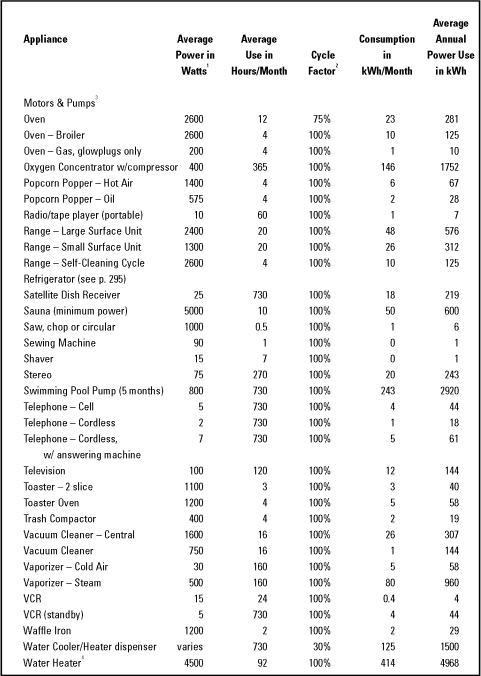
TABLE C. 1 CONSISTS OF A APPLIANCE USE CHART; simply look up the appliance you want to know about and use the default usage figures. Note that I have made some assumptions about how many hours you might use each appliance in an average month, and you won’t use everything on the list throughout the year (air conditioners, for example). Your power consumption will vary depending on how you use each item, so you will need to adjust for your actual usage.
The first column of the chart identifies the appliance, the second shows the power demand in watts, the third column gives an estimate of the monthly hours the appliance is in use, while the fourth offers an adjustment for cycle factor. Perhaps the most useful column is the fifth, showing average monthly power consumption of the appliance so that you can work with this chart while looking at your monthly power bill. The last column is an average annual use for each appliance, assuming that it is used year-round. This may not be true in all cases, such as with air conditioning.
If you have items that are not on the chart, or if you wish to more closely calculate your actual consumption, you will need to know two things:
1. The power demand, in watts, of the appliance. You can use the default wattage listed in the chart, the wattage information listed on the appliance, or the metered wattage.
2. The monthly hours of operation. Multiply watts times the time in use to arrive at monthly watt-hours consumed by the appliance, then divide by 1,000 to arrive at kWh per month.
Table C.1: Appliance Use Chart




Notes:
1 This is an average power rating figure only. Your appliance may draw more or less power.
2 Adjust the actual hours used by the cycle factor. For example: A light bulb is on 100% of the time that you can see it is on. A dryer may cycle on and off based on the thermostat setting. The “on time” of a dryer may be 75% of the total time the timer is set for. In this case, you would multiply by 0.75
3 To figure motor wattage, find the Horsepower (HP) rating on the motor tag. A reasonable assumption is that 1,000 watts is equal to 1 HP. Multiply HP by 1,000 to find watts. Example: 0.25 HP = 250 watts
4 See chapter worksheet There are an average of 730 hours in a month and 8,760 hours in a year.
Table C. 2: Refrigerator/Freezer Comparison Chart
